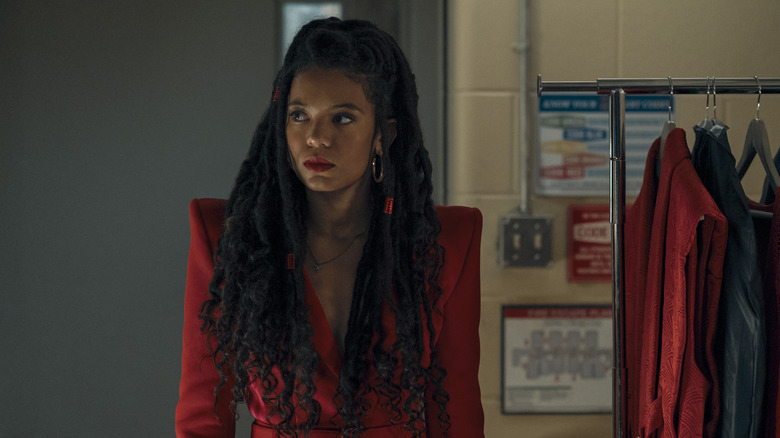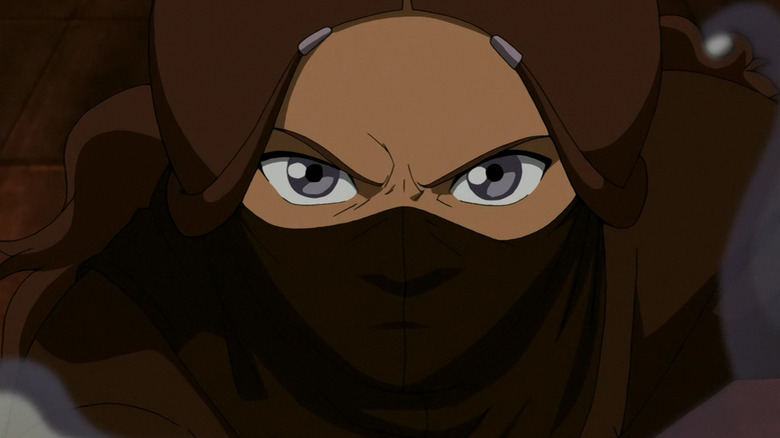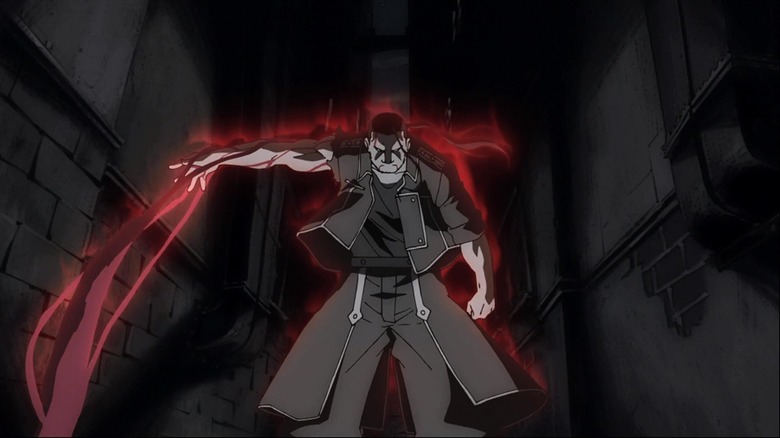Gen V Features A Hero With A Bloody Familiar Power
Warning: references to self-harm follow.
"Gen V" is set at a school for superheroes ("Supes") and so naturally features a cast with a wide variety of powers. The most grotesque ability belongs to our lead, Marie Moreau (Jaz Sinclair); she can telekinetically manipulate blood. So far, we've seen Marie wield her power as a weapon (launching the blood with piercing force, like a spear) and a healing tool (she keeps someone with a sliced neck from bleeding out).
Marie's powers arrived, naturally, during her first period at age 12. Superpowers as a metaphor for puberty is nothing new (see Sam Raimi's "Spider-Man"). However, this is the cruel world of "The Boys" — Marie couldn't control her powers and accidentally killed her parents. Now, she also uses her powers as part of a self-harm ritual; she keeps a pocket knife handy and is shown repeatedly slicing open her hand palms to pull blood out from the wounds.
These powers are also an impediment to Marie's goal of being a superhero; the Supe business is all about image, and there's "no four-quadrant appeal" to her abilities. However, despite that, they're not as unique in media as you might expect.
If you or anyone you know is having thoughts of suicide or self harm, please call the National Suicide Prevention Lifeline by dialing 988 or by calling 1-800-273-TALK (8255).
Bloodbending
"Avatar: The Last Airbender" is set in a world where select people can "Bend" one of the four classical elements: water, earth, fire, and air. As the series goes on, it explores permutations of each Bending type. Skilled Firebenders can generate lightning — the purest form of fiery energy. Talented Earthbenders can "Metalbend" by exerting their will on the mineral impurities in metals.
The eason 3 episode "The Puppetmaster" introduces a nightmarish variant of Waterbending. The human body contains plenty of water. So, when Waterbending power is at its apex under a full moon, a Waterbender can manipulate those fluids to puppeteer people, whether moving them around or just painfully contorting their bodies.
The gang meets the original Bloodbender: Hama, an escaped prisoner of war living in the Fire Nation. Katara takes the chance to learn from her, but she soon regrets that decision. Hama developed the technique to escape, and both it and her time imprisoned drove her mad. To defeat her, Katara is forced to adapt and master Bloodbending herself. To Hama's delight, Katara can't unlearn this new style.
Katara only uses the power once more; in "The Southern Raiders" when hunting down the Fire Nation soldier who killed her mother. She Bloodbends a man to interrogate him, her embrace of the power reflecting the vengeful path she's taking.
Bloodbending returned in the sequel series "The Legend of Korra," used by the main villains of season 1: brothers Tarrlok and Noatak. Both keep their skills secret; Tarrlok pursues political leadership in Republic City, while Noatak (under the masked persona "Amon") leads the anti-Bending revolutionaries, the Equalists. Amon can use his Bloodbending to remove others' abilities to Bend, crushing meridians to block the flow of Chi in the victim's body. That Amon uses Bending himself to do so is ultimately his downfall.
Water and blood
Bloodbending is premised on blood being composed in part of water. Ergo, people who can control water can control blood. "Avatar" isn't the only series to make this connection. In "Zack Snyder's Justice League," the hydrokinetic Atlantean Mera (Amber Heard) is fighting the alien invader Steppenwolf (Ciarán Hinds). She eventually tries to pull all the water out of his body via his mouth and nostrils; the stream gets bloody before Steppenwolf overpowers her.
In "Fullmetal Alchemist: Brotherhood," the anime-original villain of episode 1, Isaac McDougal, sits in a similar boat. Alchemy is about changing (or transmuting) substances into different forms. McDougal's power is based on transmuting liquid water into ice, hence his name "The Freezing Alchemist." In the episode's climax, when he runs out of external water to use, he calls on his own blood, freezing it into swords and spears as a last resort.
Not all Bloodbending is tied to water, however. One of my favorite recent fantasy novels is Jay Kristoff's "Empire of the Vampire." This deliciously written story is set in a world like medieval Christendom, but where the sun doesn't shine and vampires rule the endless night. The lead is Gabriel de Leon, a half-human half-vampire (a "coldblood"). Gabriel is implied to be part of a vampire lineage called the Esani, who can control blood, not just drink it. Flashes of this power recur throughout the novel, with more presumably to come in the planned trilogy.
Most similar to McDougal, Marie primarily uses her own blood as a weapon. However, her powers don't seem to be related to water, nor has she puppeteered anyone like a Bloodbender. We'll just have to wait and see to find out exactly how her powers work.
"Gen V" is streaming on Prime Video, with new episodes premiering on Friday.


